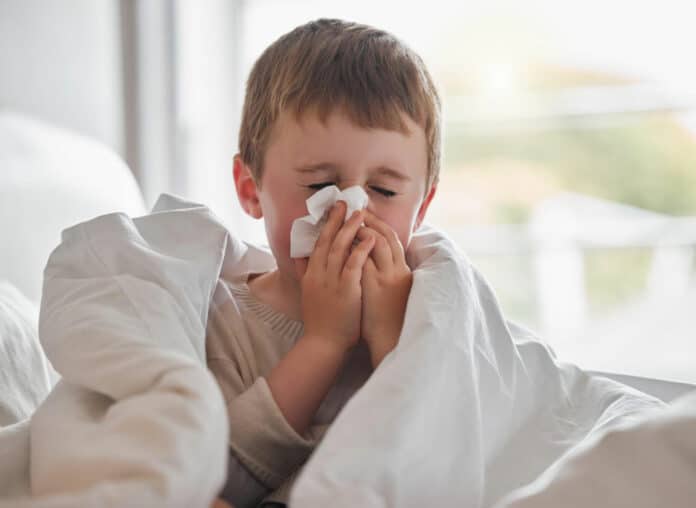Brigham and Women’s Hospital researchers studied how two common antibiotics, amoxicillin and amoxicillin-clavulanate, affected children with sinus infections. They found that both antibiotics worked equally well in clearing up the conditions. So, doctors can use either of them.
However, kids who took amoxicillin-clavulanate had more tummy troubles and yeast infections. This means doctors should be careful when choosing the antibiotic, as some kids might have more side effects with one of them.
Lead author Timothy J., MD, MPH, MSc, an associate epidemiologist in the Brigham’s Division of Pharmacoepidemiology and Pharmacoeconomics, said, “This study adds recent, actionable data and evidence to inform what antibiotic a clinician should choose to treat a child with acute bacterial sinusitis. This study shows no difference in the treatment failure rate regardless of which of these two antibiotics you choose.”
Amoxicillin-clavulanate is a potent antibiotic that can fight many types of bacteria but often causes stomach problems. Researchers were concerned that using it too much might make antibiotic-resistant bacteria. So, they wanted to see if it’s better to use amoxicillin or amoxicillin-clavulanate for kids with sinus infections.
They looked at data from over 320,000 cases of children with sinusitis and compared how well the two antibiotics worked. Surprisingly, both antibiotics were almost equally good at curing sinus infections. Very few points failed; most could be fixed with a different antibiotic, and only a tiny number of kids needed to go to the emergency room.
However, amoxicillin-clavulanate had more side effects. About 2.3% of kids had problems with it, like upset stomachs and yeast infections, while only 2% had issues with amoxicillin. This makes researchers think that amoxicillin, which has fewer side effects, might be the better choice for treating sinus infections in children.
Timothy said, “Our study shows more adverse events when amoxicillin-clavulanate is used. “Based on these data, physicians should seriously consider prescribing amoxicillin as a first line of defense against acute sinusitis.”
Not all sinus infections are caused by bacteria; viruses cause some. It’s hard to tell the difference between bacterial and viral sinus infections because they have similar symptoms. So, doctors often give antibiotics to see if the infection goes away. About 85% of kids with sinusitis get antibiotics; most of the time, they get amoxicillin or amoxicillin-clavulanate.
This study didn’t look at what caused the infections (virus or bacteria), and it wasn’t a controlled experiment, which means there could be some biases in the results. However, earlier studies from more than 20 years ago found that both amoxicillin and amoxicillin-clavulanate worked about the same in relieving symptoms. However, those studies had fewer patients, and bacteria have changed. This new study with a larger group of patients compared how well both drugs work now.
Timothy said, “If a physician is trying to decide between these two drugs, they can look at these results and see that 98% of kids got better regardless of whether they were prescribed amoxicillin or amoxicillin-clavulanate. The chance that a child will end up in the hospital after using these drugs is less than one in a thousand. That should provide some reassurance that a child is going to do pretty well regardless of the antibiotic.”
In conclusion, this study highlights the importance of considering both effectiveness and side effects when selecting antibiotics for pediatric sinusitis, aiming to provide the best care for children suffering from this condition.
Journal reference:
- Timothy J., Matthew P. Kronman et al., Treatment Failure and Adverse Events After Amoxicillin-Clavulanate vs Amoxicillin for Pediatric Acute Sinusitis. JAMA. DOI: 10.1001/jama.2023.15503.
